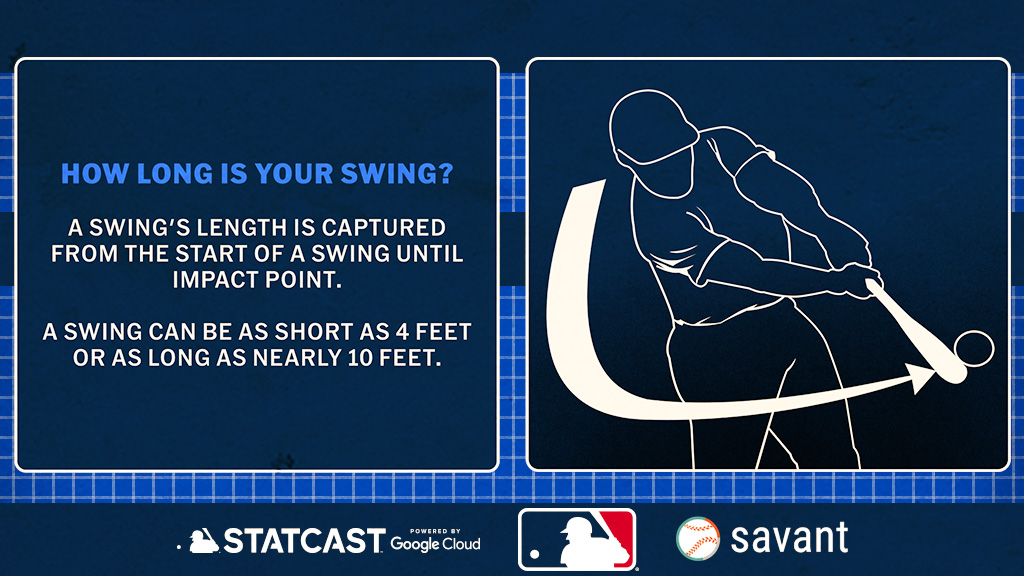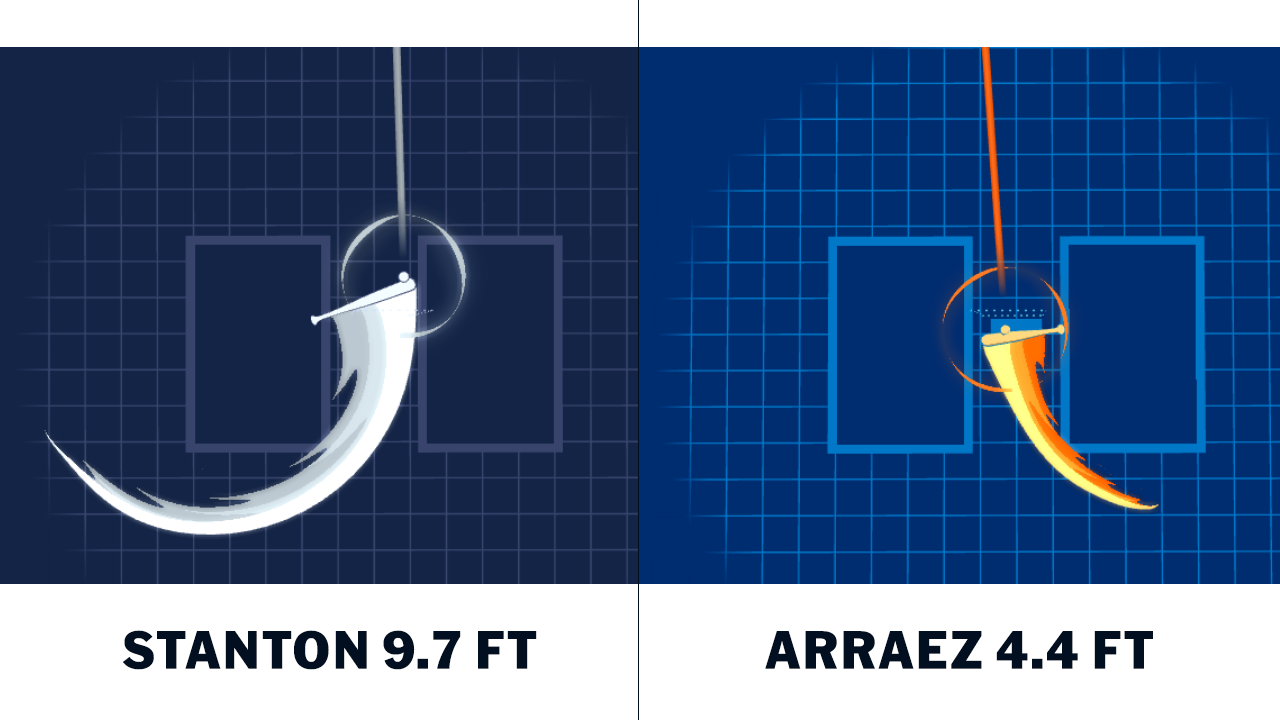Swing Length
Definition
Swing length is a metric intended to identify if a batter has a short or long swing.
It is calculated in terms of feet the bat traveled during the swing, specifically laid out like this: The total (sum) distance (in feet) traveled by the barrel of the bat in X/Y/Z space, from the start of bat tracking data (generally around 150 ms), up until impact point.

The average swing length is 7.3 feet, and the seasonal average spread goes from just under six feet to more than eight-and-a-half feet – or more than 40 inches from most to least.
While there is some overlap between swing speed and swing length, it’s hardly a perfect one. For example, in the first month of 2024, Oneil Cruz and Paul Goldschmidt had the same swing length (7.7 feet), but Cruz’s swing was nearly 5 MPH faster.
For a visual example, compare these two swings. This Luis Arraez swing [link] looks like he is quick and short to the ball, and the data says: 4.4 feet of swing length. This Giancarlo Stanton swing [link] looks far longer, and it is – more than twice as long, in fact, at 9.7 feet.
Example:

In the first month of 2024, shorter swings were – as expected – more likely to make contact and less likely to hit for power.
Shorter than average swings
.258 BA / .359 SLG / .268 wOBA / 19% whiff rate
Longer than average swings
.235 BA / .422 SLG / .282 wOBA / 30% whiff rate
You may view the current season’s swing length leaderboard here.